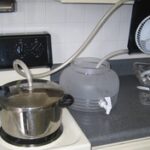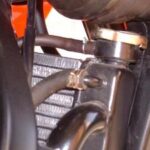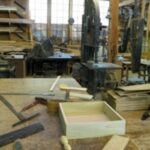Depending on the make and model of your car; replacing your car’s radiator hoses can be done easily in less then an hour. Older cars are often easier to work on when it comes to replacing something such as a radiator hose. Follow these steps to replace your radiator hose when it becomes cracked or worn.
What you’ll need:
-New radiator hose(s)(check the manual to see if a specific part number is needed)
-New radiator clamps (if clamps are rusted, worn, or the screws are stripped)
-Phillips head screwdriver
-Large drip pan (or something that can hold a few gallons of liquid and fit under your engine)
-2 large bottles of coolant or antifreeze.
Cool down – Never work on your car when the engine is still hot. Even as the engine cools down, the fluid inside the radiator can be extremely hot and a great amount of pressure can build up inside the radiator, and hoses. It is best to work on the car when you haven’t started it in the past few hours and on a day when the temperatures aren’t too hot.
Place the drip pan – Or whatever container you are using to collect the old coolant as it drains from the system. Place it under the bottom hose where the hose connects to the bottom of the engine.
Loosen the bottom hose clamp – First loosen the bottom hose clamp (many cars have two separate radiator hoses) nearest to where the bottom hose connects to the engine. Radiator fluid will flow out into your drip pan when you pull the hose off. If there are no clogs in the system, all the fluid should drain from the radiator, reservoir, and hoses. This may take a few minutes.
Flush the system – This step is optional if you are only replacing the hoses, but if you haven’t flushed the radiator system in a while, you might as well while you have it empty. Loosen and disconnect the top hose from the engine and place a garden hose connected to a water supply inside the hose. Slowly turn on the water and allow it to run through the system. You should see the water draining into the drip pan. You can also run water into the reservoir tank as well.
Remove the hoses – Once all the coolant is removed, you can loosen all the clamps and take out the hoses. If you are only replacing one hose, then only those clamps need to be removed.
Install the new hoses – Place the new hoses in the same way the original ones were positioned and make sure the hose openings fit snug and secure around the openings in the engine and radiator. The hose should fit around these opening points and not placed inside the openings. When they are in position, put the clamps on and tighten the clamp screws with the Phillips head.
Be careful not to puncture the hoses with the screws, clamp, or screwdriver. Once all the hoses and clamps are in place, do one more check to make sure all clamps are tight.
Refill – At this point you can refill your cooling system with fresh coolant/antifreeze. Pour it slowly into the opening on the top of your radiator until the fluid is near the top of that opening. Wait a few seconds as the level of fluid might appear to be at the top, only to drain down into the system. Securely tighten the radiator cap, then fill the reservoir tank (sometimes called the overflow tank) to the ‘cold’ fill line level. Do not fill the reservoir tank all the way or even to the ‘hot’ fill line as this can cause the system to overflow or cause increased pressure that can blow the hoses or the radiator.
Check for leaks and any fluid coming out around the clamps. If you see fluid you may need to readjust the hose so it overlaps more over the openings on the engine and radiator and tighten the clamps. After fixing any leaks, recheck the fluid levels and top off as needed.
If you can’t clearly see all the hose connections or you vehicle requires the use of parts and tools you don’t have access to, take the vehicle to a professional to have the hoses replaced. Only replace radiator hoses yourself when you are sure you can complete the job safely and properly.





